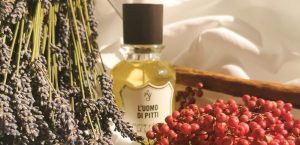COSMETIC REMEDIES for ACNE
Acne is a skin condition that must be treated with specific and very delicate products: here are some tips for proper skin care
1st STEP: EXFOLIATION
When you suffer from acne, you often tend to exaggerate with exfoliation. Don’t make this mistake! At this stage, delicacy is essential. Frequency is also important: give yourself an exfoliation no more than once a week.
Choose the right product and don’t risk drying the skin too much, because you could get the opposite effect: the skin could produce excess sebum to protect itself.
Therefore prefer creams with very fine microgranules, such as the FACE SCRUB WITH BEESWAX AND JOJOBA MICROGRANULES, which gently removes dead cells by freeing the follicle and at the same time counteracts dryness by nourishing the skin.
2nd STEP: CLEANSING
During the day, the skin comes into contact with impurities from the external environment, such as dust, smog, but also make-up. To prevent these residues from clogging the pores and mixing with sebum and dead cells, inflaming the skin and forming pimples, it is important to clean your face well in the evening before going to sleep. The ideal, in case of acne, is to use detergents that are both delicate and antibacterial, such as TEA TREE OIL SOAP, with tea tree essential oil, which acts as a natural antibacterial.
In the morning, on the other hand, to free the pores from the thin layer of sebum that normally forms during the night, all you need is an extremely delicate cleanser such as ULTRA-DELICATE BIOTEDERGENT CREAM. Its formula composed of only 3 ingredients makes it a very delicate product and, thanks to its creamy texture, a small amount with a little water is enough to cleanse the skin in depth without the use of foaming agents.
….and to remove make-up?
Instead of common make-up removers that can irritate or dry inflamed areas, in case of acne it is more appropriate to use natural vegetable oils, as long as they are “lean” and rebalancing sebum such as JOJOBA OIL. Simply apply it directly to the face or onto a make-up remover pad, massage to remove make-up and rinse off.
3rd STEP MOISTURIZE AND DISINFECT
One of the most common mistakes people make is to believe that acne-prone skin doesn’t need hydration. This is not the case, in fact, even in the case of acne, the skin must be hydrated during the day, the important thing is not to use creams that are too greasy and that contain a sunscreen: in fact, in contact with UV rays, the areas affected by acne quickly tend to get stained . The BIOCREMA is right for us: extreme delicacy, so much so that it can also be used on the eye contour, associated with spv15.
As a night treatment, we recommend curative products that are possibly natural antibacterials, since antibiotic pharmaceutical creams risk developing antibiotic resistance. This is why a recommended product to hydrate and simultaneously disinfect the skin is LENIDERM PLUS, a cream based on Tea Tree Oil, skin rebalancing and antibacterial, and Bisabolol, a chamomile extract that has an emollient and calming action.
WHAT IF I ALREADY HAVE SCARS OR ACNE STAINS?
Acne pimples are gone but have they given way to blemishes and scars?
Don’t worry: Vitamin C comes to your rescue! In fact, in addition to having an anti-aging effect on the skin, Vitamin C is also known for its lightening properties. For an intensive treatment we recommend using the REVITALIZING LIGHTENING VITAMIN SERUM associated with JEUNESSE NIGHT&DAY- REVITALIZING VITAMIN CREAM. Apply both products all over your face morning and night for an even result.
Do you prefer oils to creams? There is ROSA MOSQUETA OIL, which has always been a valid lightening remedy effective on both spots and scars.
by CHIARA DUILIO
BIOLOGIST



